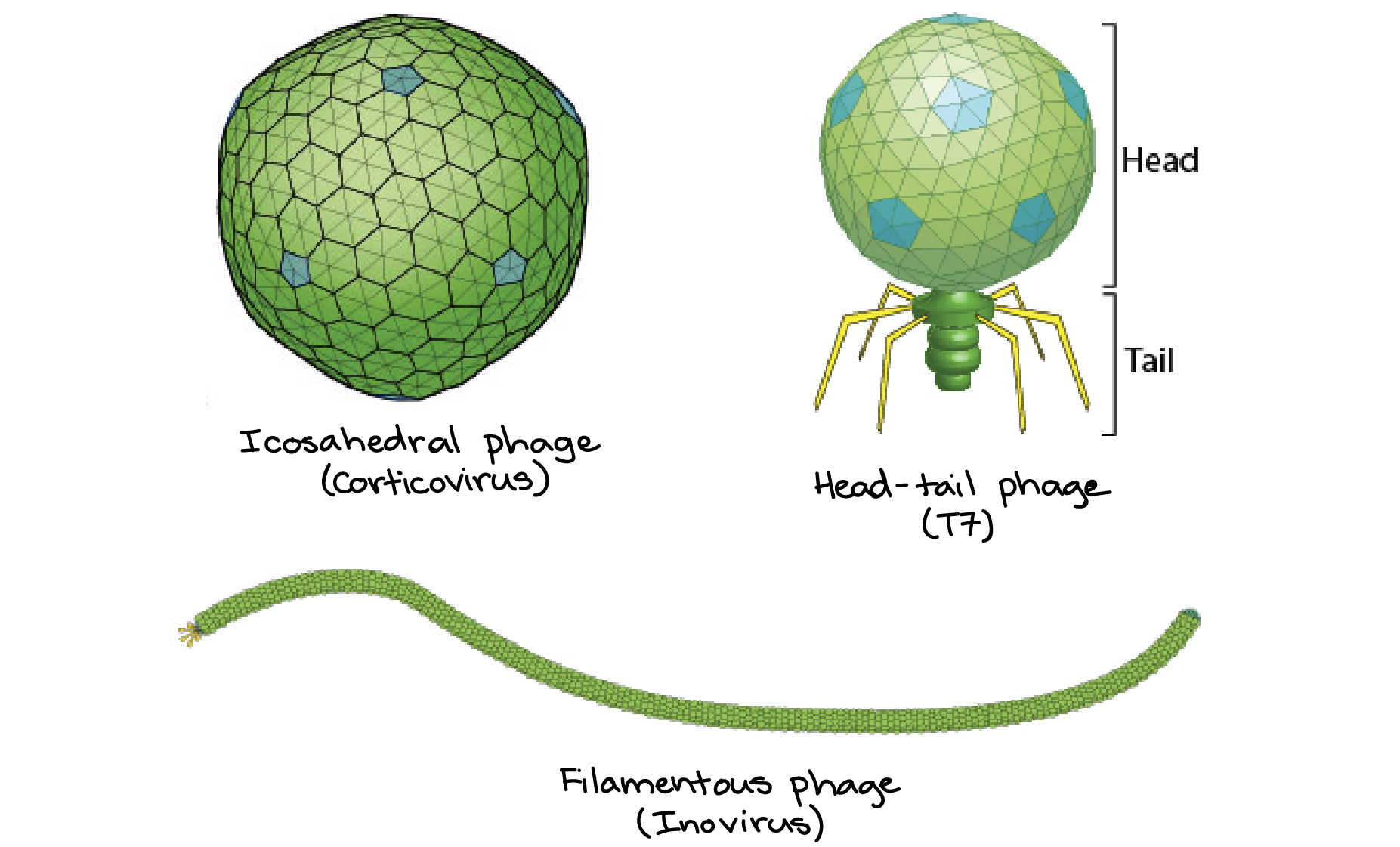INTRODUCTION
Bacteriophage (phage) are obligate intracellular parasites that multiply inside bacteria by making use of some or all of the host biosynthetic machinery (i.e., viruses that infect bacteria.).
There are many similarities between bacteriophages and animal cell viruses. Thus, bacteriophage can be viewed as model systems for animal cell viruses. In addition a knowledge of the life cycle of bacteriophage is necessary to understand one of the mechanisms by which bacterial genes can be transferred from one bacterium to another.
At one time it was thought that the use of bacteriophage might be an effective way to treat bacterial infections, but it soon became apparent that phage are quickly removed from the body and thus, were of little clinical value. However, bacteriophage are used in the diagnostic laboratory for the identification of pathogenic bacteria (phage typing). Although phage typing is not used in the routine clinical laboratory, it is used in reference laboratories for epidemiological purposes. Recently, new interest has developed in the possible use of bacteriophage for treatment of bacterial infections and in prophylaxis. Whether bacteriophage will be used in clinical medicine remains to be determined.
- The lytic cycle: The phage infects a bacterium, hijacks the bacterium to make lots of phages, and then kills the cell by making it explode (lyse).
- The lysogenic cycle: The phage infects a bacterium and inserts its DNA into the bacterial chromosome, allowing the phage DNA (now called a prophage) to be copied and passed on along with the cell's own DNA.
A bacteriophage is a virus that infects bacteria
- Phage genomes can consist of either DNA or RNA, and can contain as few as four genes or as many as several hundred^{1,2,3}1,2,3start superscript, 1, comma, 2, comma, 3, end superscript.
- The capsid of a bacteriophage can be icosahedral, filamentous, or head-tail in shape. The head-tail structure seems to be unique to phages and their close relatives (and is not found in eukaryotic viruses)^{4,5}4,5start superscript, 4, comma, 5, end superscript.
Bacteriophage infections
Lytic cycle
- Attachment: Proteins in the "tail" of the phage bind to a specific receptor (in this case, a sugar transporter) on the surface of the bacterial cell.
- Entry: The phage injects its double-stranded DNA genome into the cytoplasm of the bacterium.
- DNA copying and protein synthesis: Phage DNA is copied, and phage genes are expressed to make proteins, such as capsid proteins.
- Assembly of new phage: Capsids assemble from the capsid proteins and are stuffed with DNA to make lots of new phage particles.
- Lysis: Late in the lytic cycle, the phage expresses genes for proteins that poke holes in the plasma membrane and cell wall. The holes let water flow in, making the cell expand and burst like an overfilled water balloon.
Lysogenic cycle
To lyse or not to lyse?
Bacteriophage vs. antibiotics
Semior Research Fellow AIT
Department of Pathology, Microbiology and Immunology
University of South Carolina School of Medicine
Columbia














Chaaru Aphale 7 jr
congrats